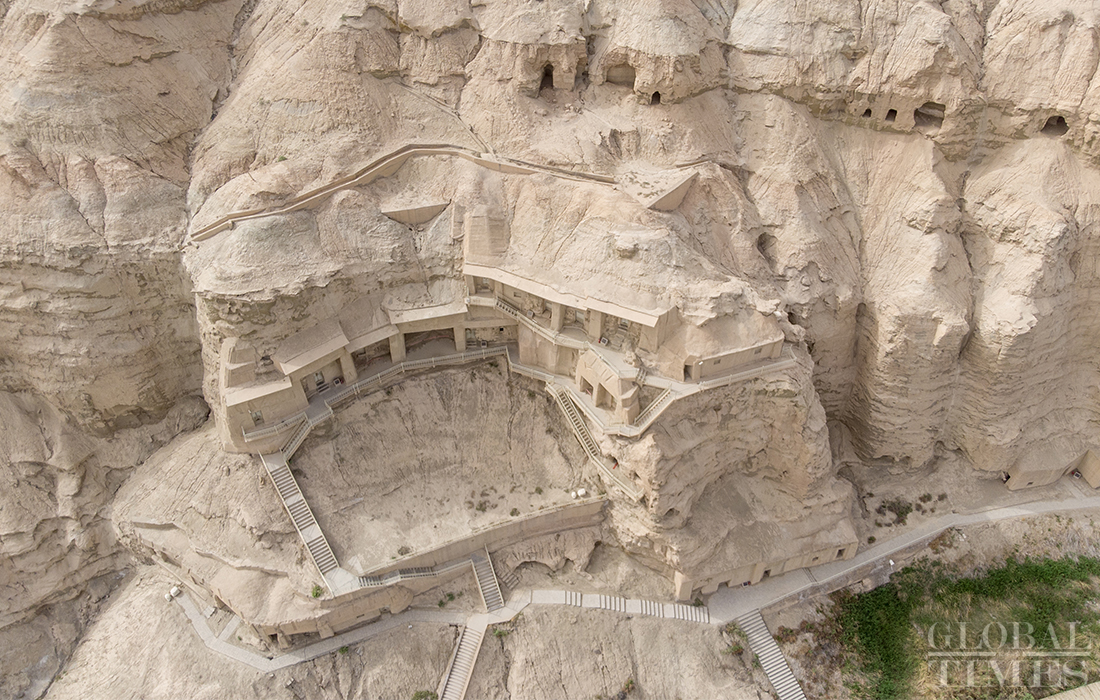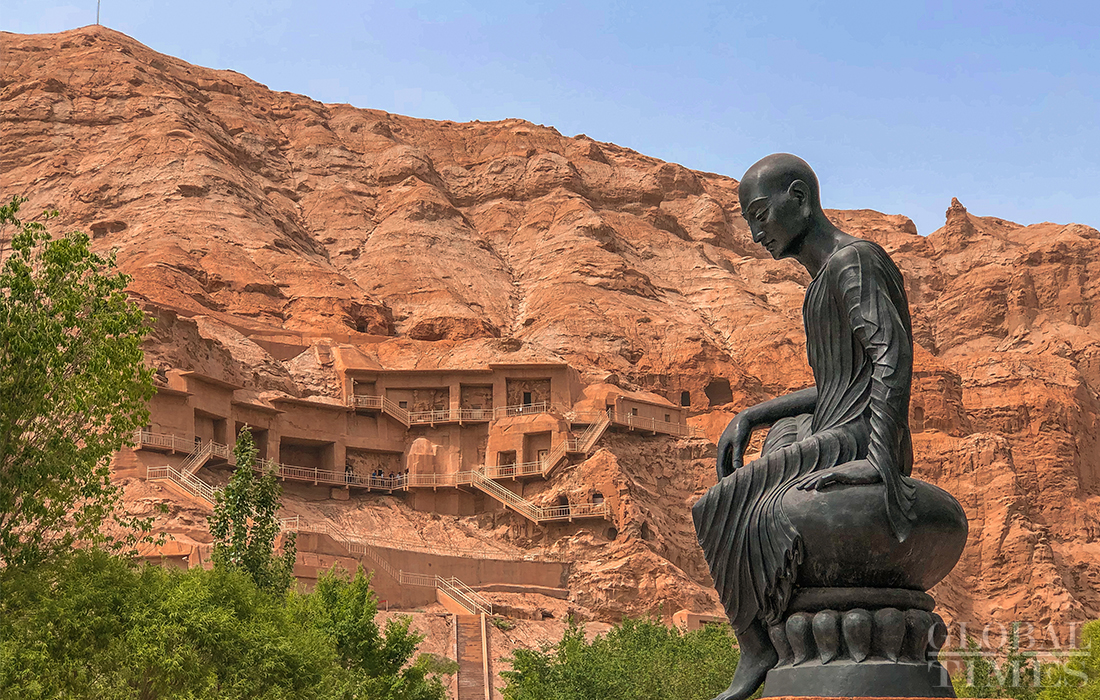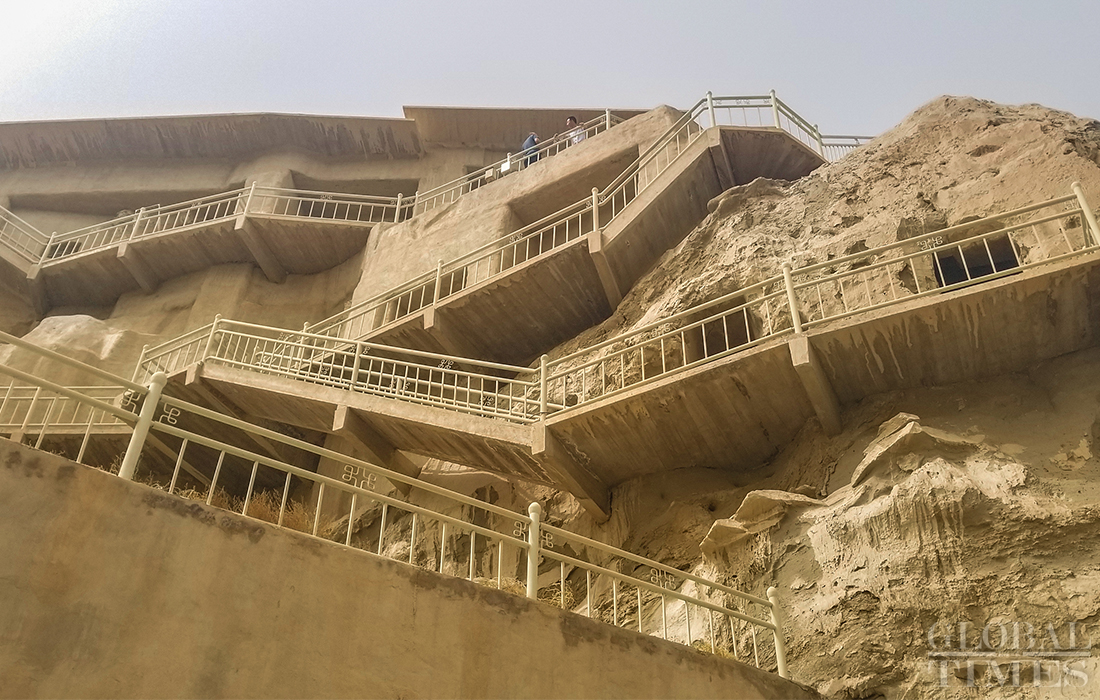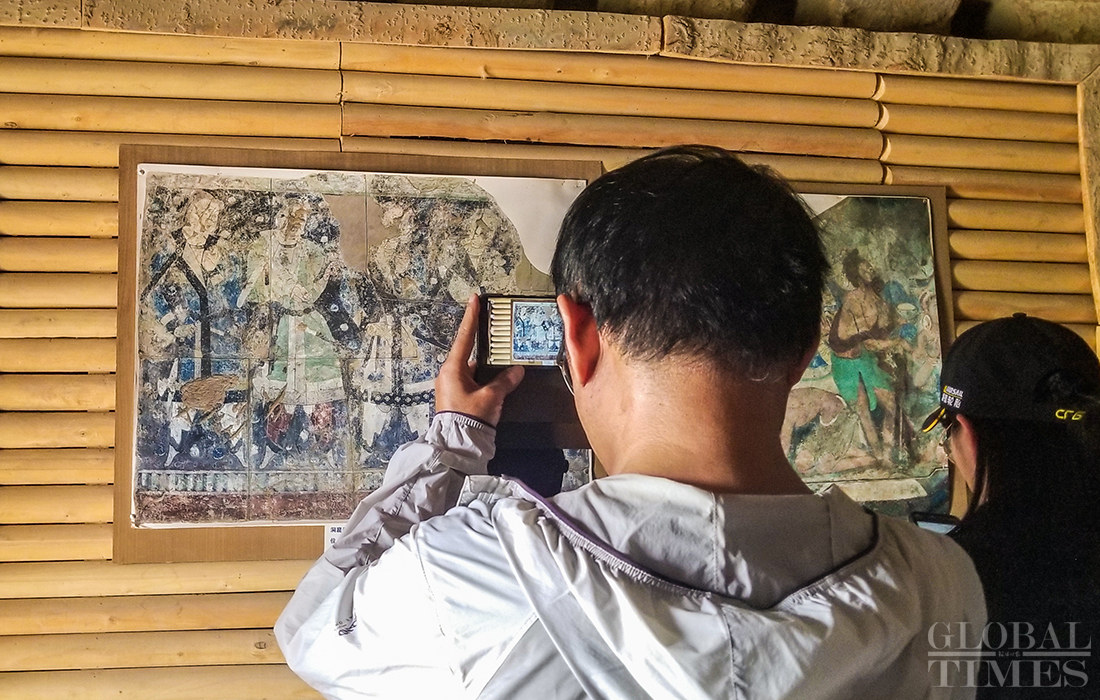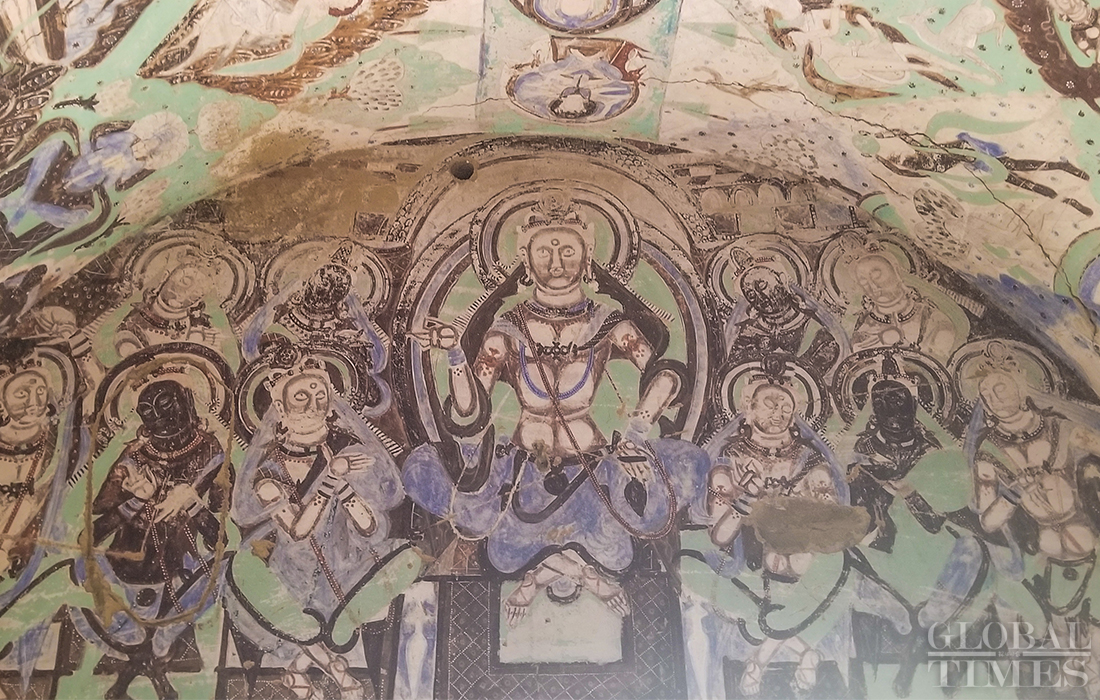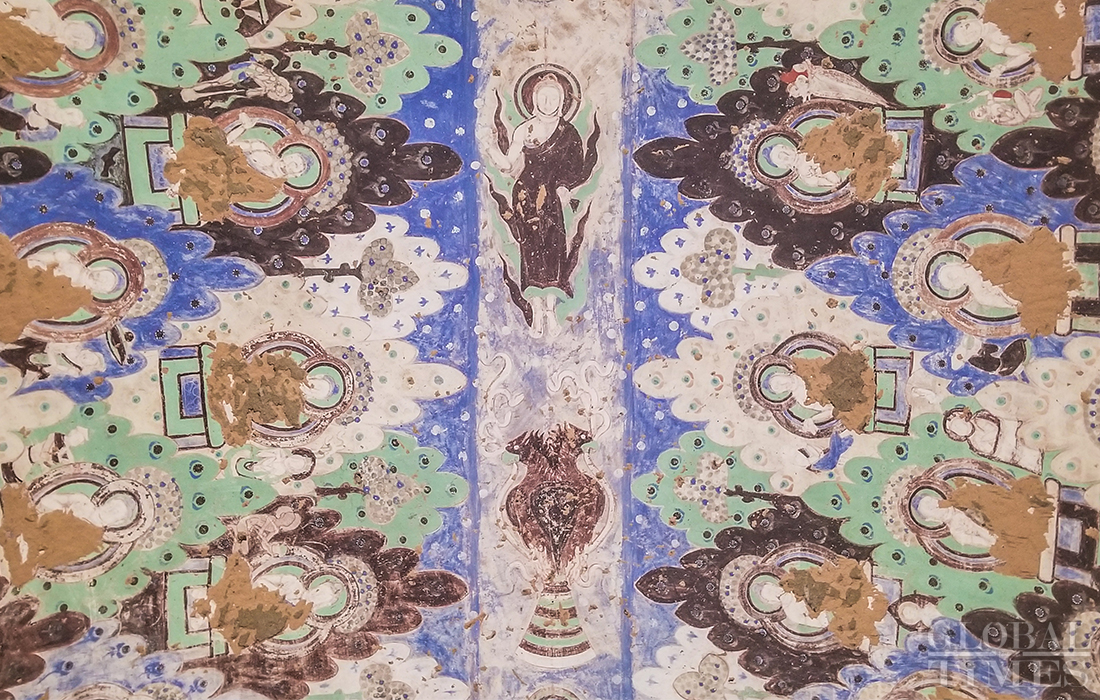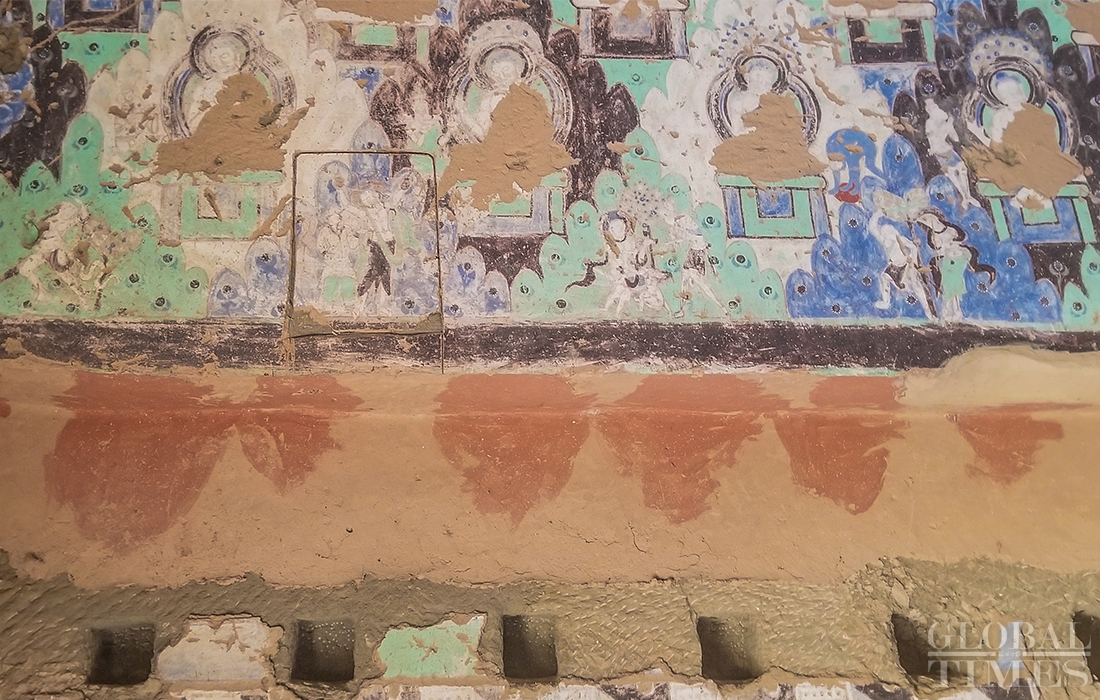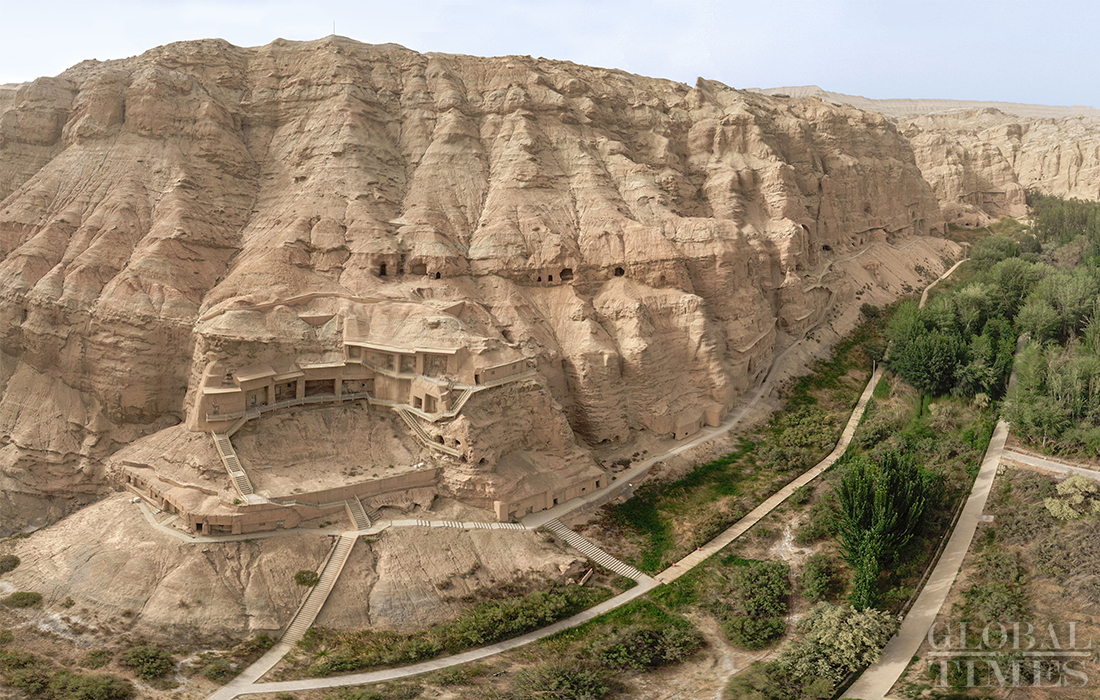Editor's Note:
With 349 caves and nearly 10,000 square meters of mural paintings created between the 3rd and 8th centuries, the Kizil grottoes in Xinjiang's Baicheng county is believed to be the earliest Buddhist cave complex in China. Some of the murals were stolen more than 100 years ago and are currently overseas. The cave complex was placed on UNESCO's World Heritage List in 2014. (Photos: Yang Ruoyu, Liu Xin/GT)
